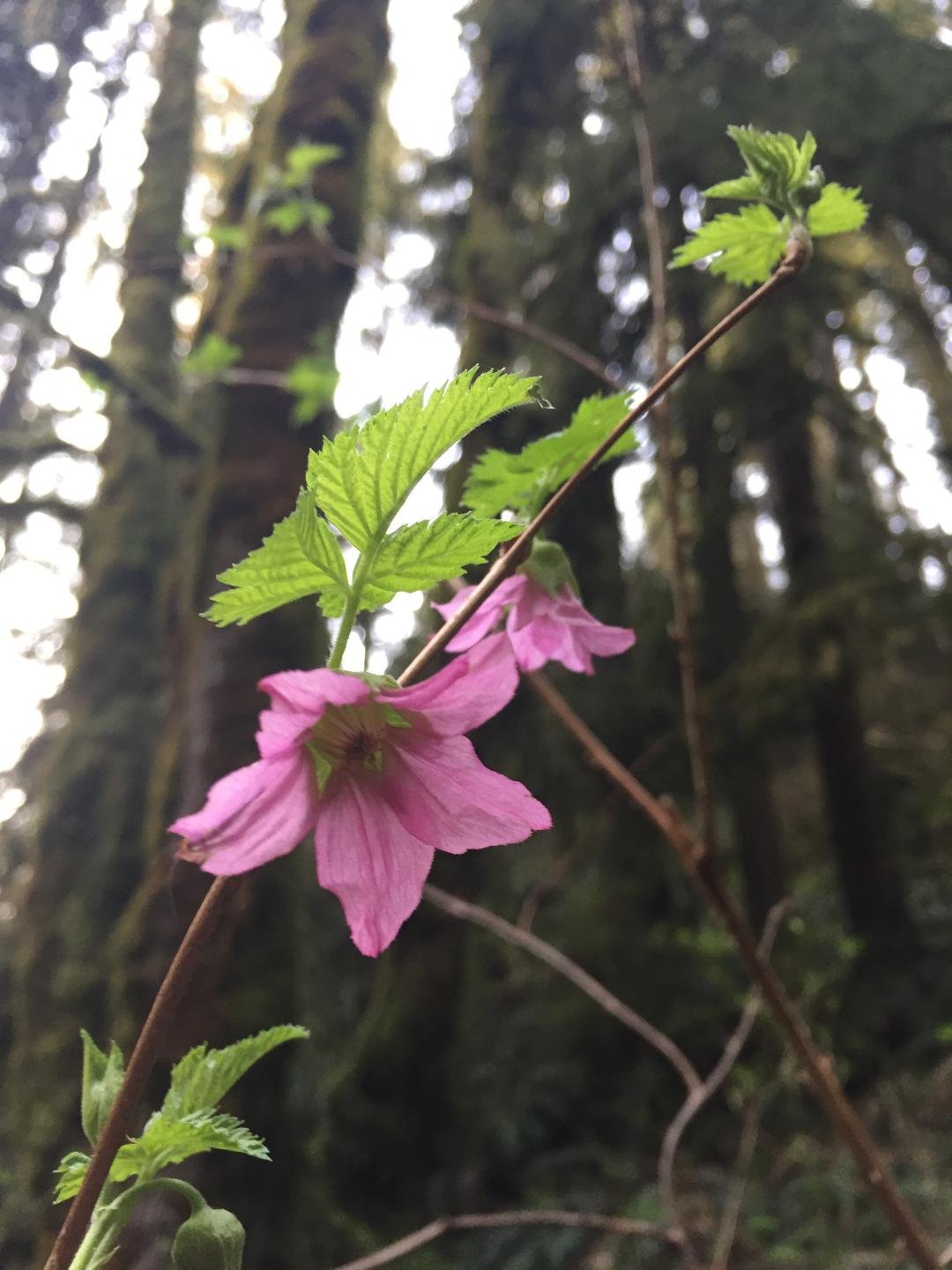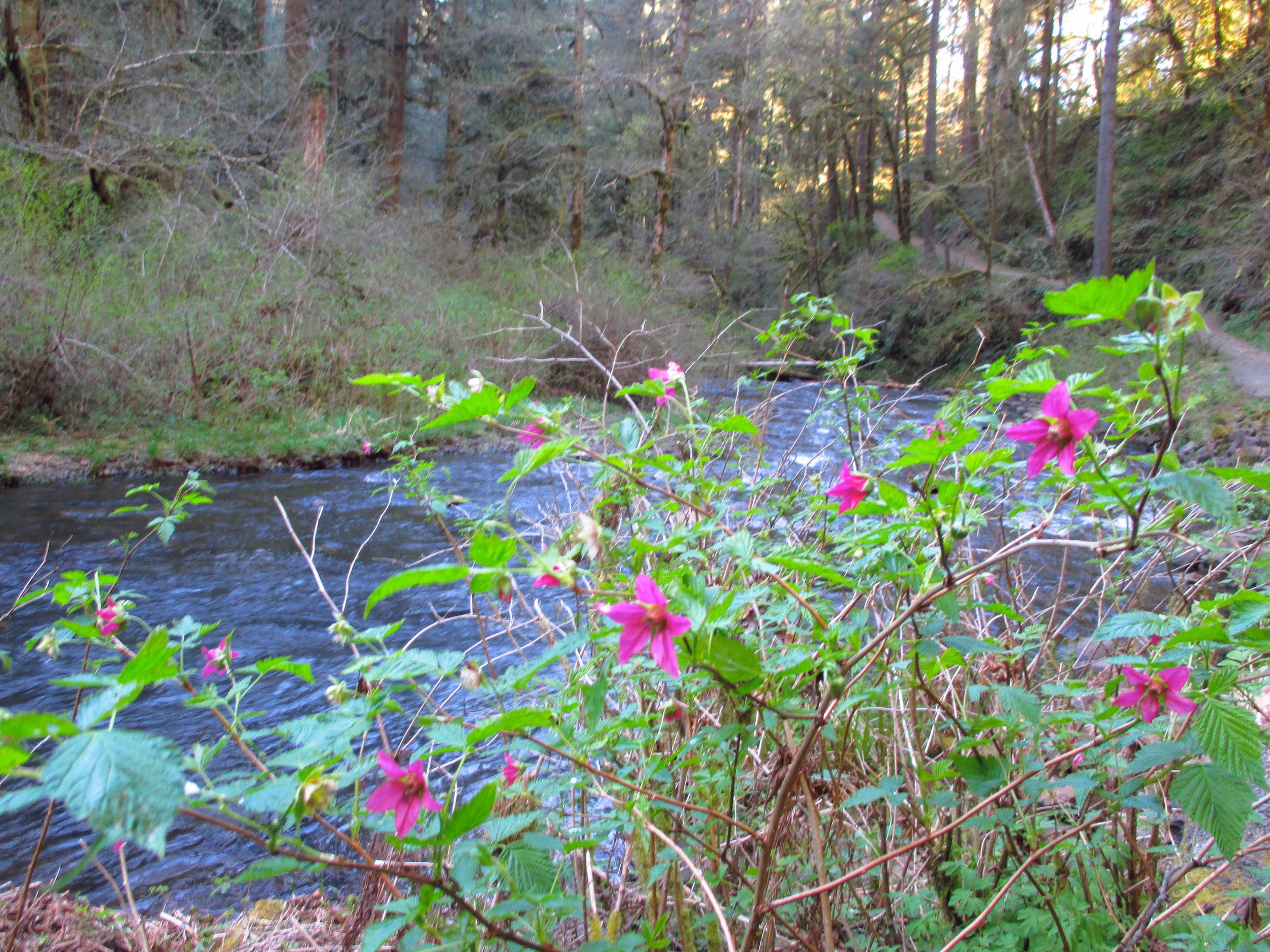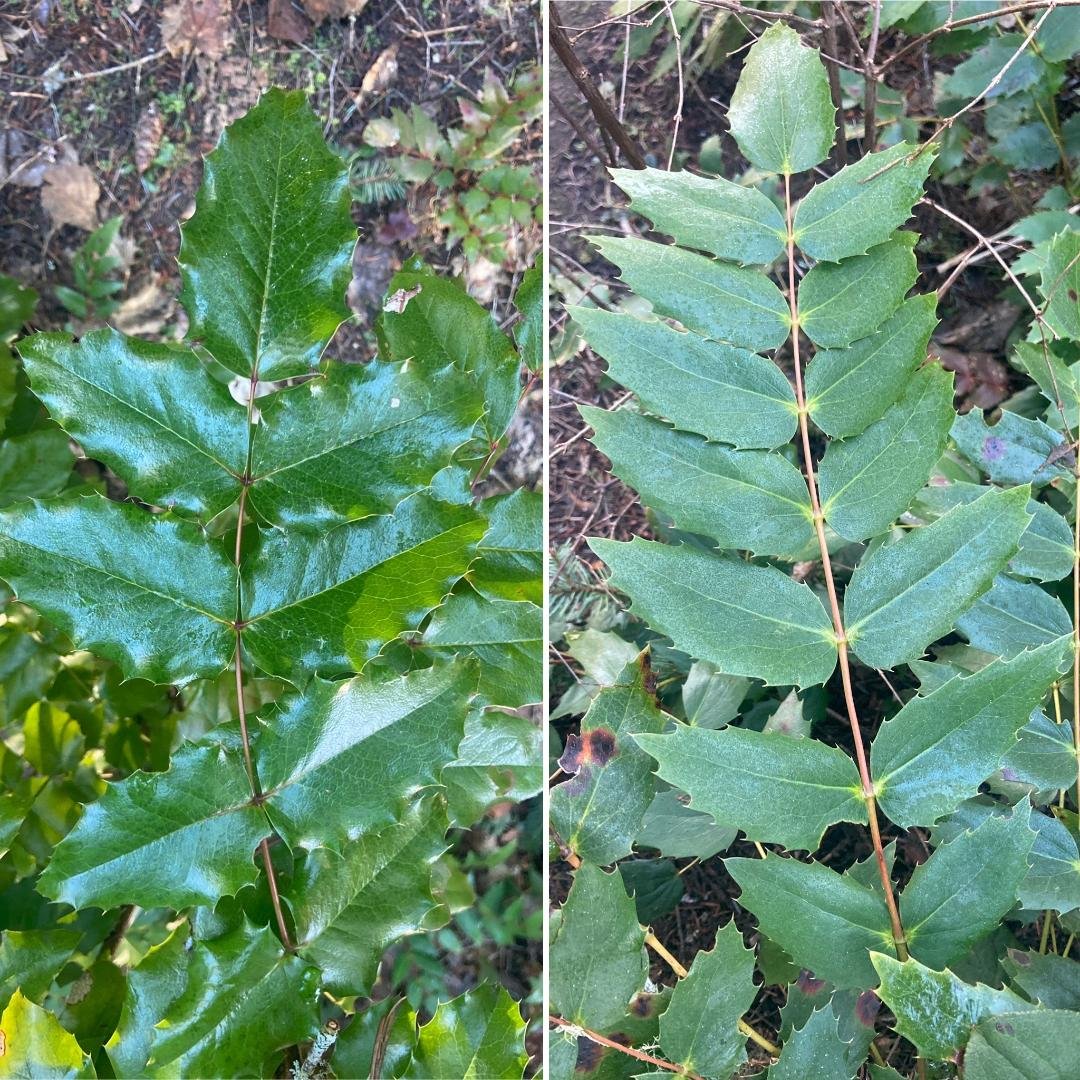Vaccinium parvifolium
Red Huckleberry
Description:
Erect shrub with green strongly angled twigs. Stems do not root if touching soil.
Thin leaves nearly deciduous, oval, with tiny hairs underneath and sharp tips that fall off. Flowers pinkish, hanging singly from base of leaves, urn-shaped, with 5 lobes.
Berries bright red, 1/4–1/2 in., edible but somewhat tart.
Grows in coniferous forests, in humus, from coastline to mid elevations. Often seen growing out of old rotting stumps.
Blooms more prolifically and sets more fruit in forest openings that get a little more light.
Red huckleberry’s tart red berries are commonly used in juices, jams, and baked goods. They also attract mammals, birds, and many insect pollinators!
Rarity: Locally Common
Flowering Time: Mid Spring
Life Cycle: Perennial
Height: 3--12 feet
Habitat: West-Side Forest
Found In: Olympic Np, Mt. Rainier Np, N Cascades Np
Native: Yes
Source: Wildflowers of the Pacific Northwest
Additional Resource: Oregon Flora Project





























































